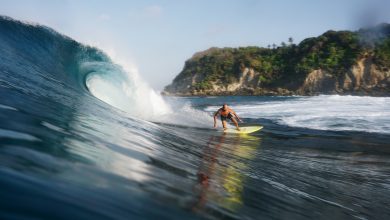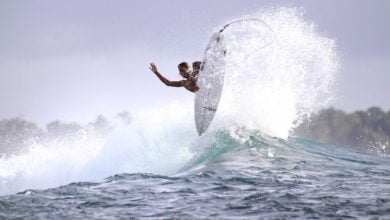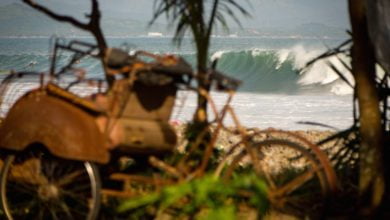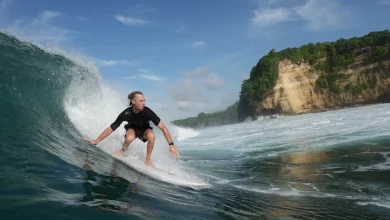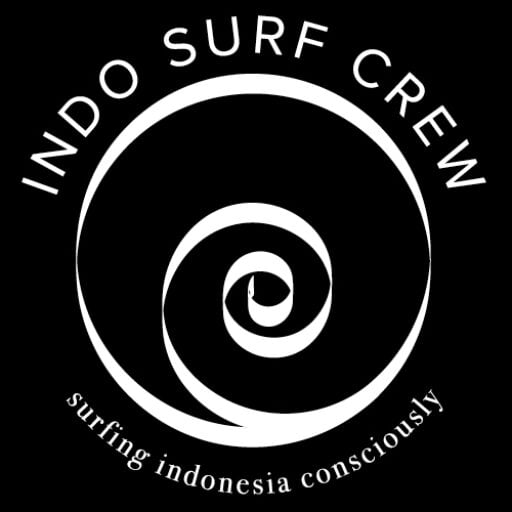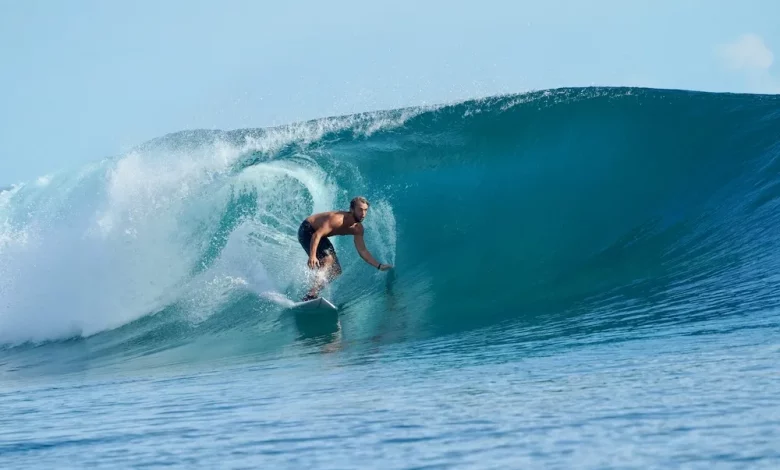
Buying a home. Purchasing a new car. Figuring out which boards to bring to Indonesia on your first surf trip.
Life is full of difficult decisions. And while choosing your Indo quiver may not be as life-altering as the first two examples, nobody wants to experience the soul-crushing feeling of travelling days to reach a far-flung part of Indonesia, only to realise you’ve brought the wrong boards.
To ensure you have the right boards for your first Indonesia surf trip, here are a few things to consider plus our top 10 recommendations for Indo surfboards.
What to look for in an Indonesian surfboard
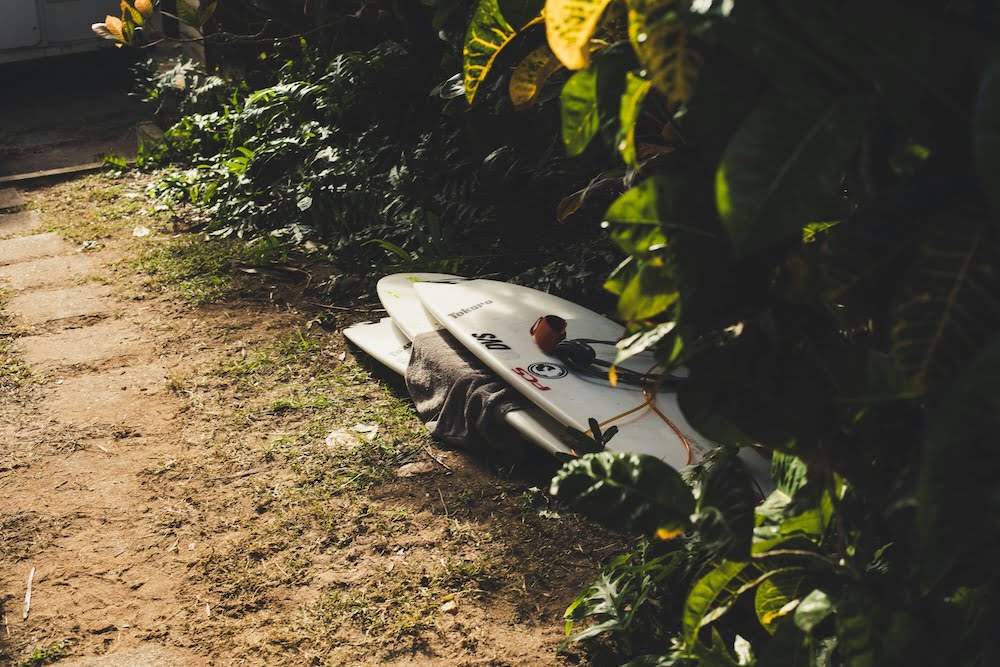
We’ve listed our top 10 models for your Indonesia quiver, but what should you be on the lookout for in a board? In our opinion as one of Indonesia’s most trusted surf trip providers, we recommend boards that have all OR a combination of the below features:
- Traction / Lower rails to help your board ‘bite’ into the wave face and provide traction
- Control / Rounded or pin tails to help with manoeuvrability and control in critical sections
- Paddle power / Plenty of foam (volume) around the chest for paddle power and early entry
- Glassing / Thicker glassing, while making the board heavier, will ensure your board handles heavy Indonesia wipeouts and doesn’t snap so easily
- Turning / Medium to continuous rocker to fit into the curved wave faces that Indo is so famous for
- Sustainability / Is the board built using quality materials that are made to last? Is it shaped using sustainable methods? The more eco-friendly your board is, the better
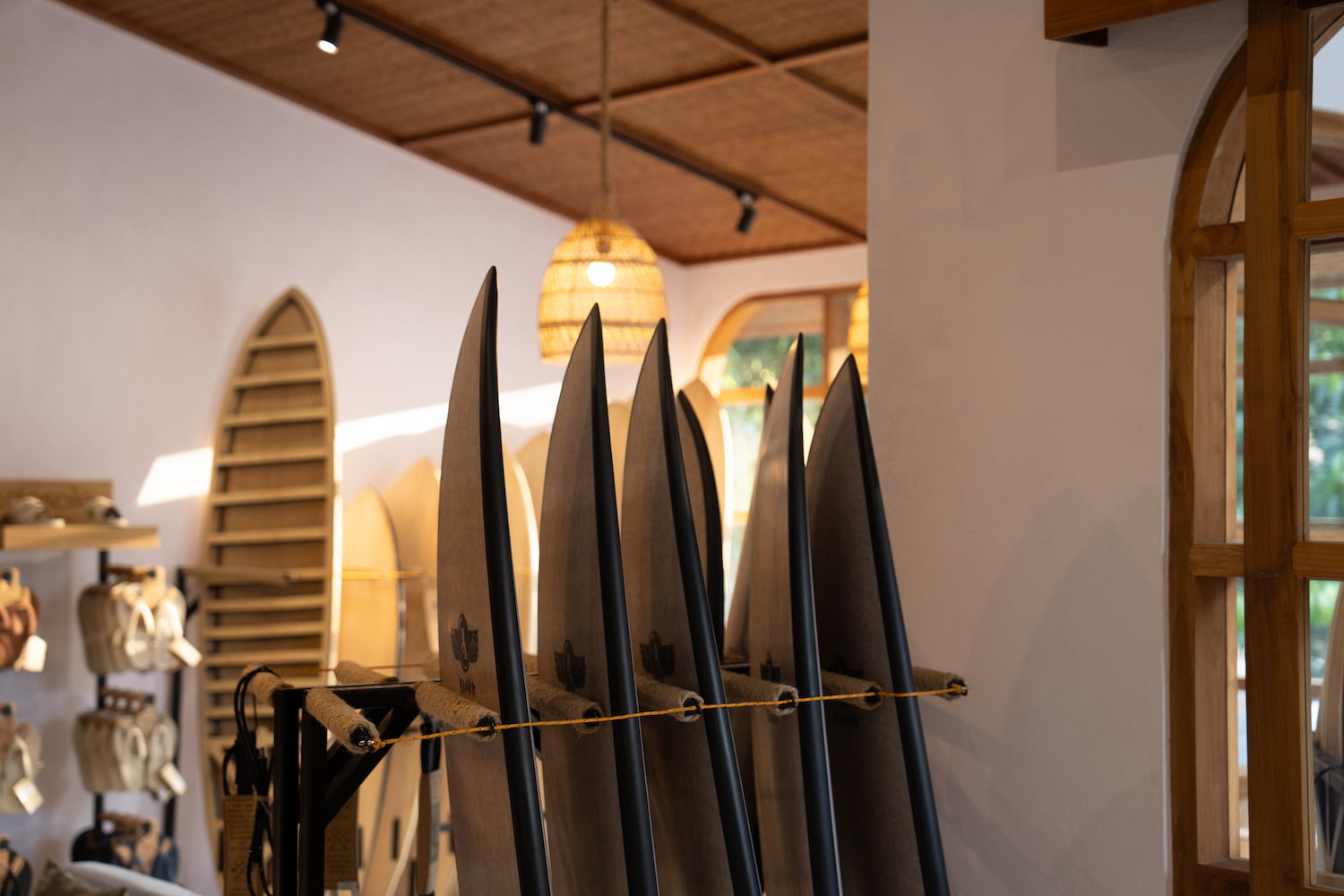
6 key considerations when choosing your Indo surfboards
Which time of the year are you traveling to Indonesia?
Are you traveling during the low season (Dec-Feb)? shoulder season (Mar-April / Oct-Nov)? or high season? (May-Sept).
During the low and shoulder seasons, consider bringing a versatile quiver that includes a shortboard for tackling the occasional larger swells, a fish or hybrid board for smaller, mushier waves, and perhaps a funboard or mini mal for cruising on mellower days. These boards will ensure that you’re prepared for a variety of conditions that you might encounter during these transitional periods.
During the high season, a high-performance shortboard for tackling the faster, barreling waves that Indonesia is famous for is essential to make the most of your trip. Additionally, consider packing a step-up board or gun for chasing down the bigger swells that often roll in during the peak season.
Indonesian waves are steeper, faster, longer… most of the time
Your local break probably has the odd epic day, but we wager that its B+ at best most of the year.
An average surf day in Indo, however, is like an A++ day at most breaks around the world. Simply put, the waves are on another level entirely.
That being said, you’ll need to make sure your boards can handle the steep takeoffs and long, fast walls.
Narrow round or pin tails, low rails and good amounts of rocker are all characteristics that will give you the confidence to grow your surfing ability in solid waves. But if you want to bring a fish or fun-board for those smaller days, that’s totally ok too.
In terms of glassing, most boards are glassed at 4x4x4, which is two layers of 4oz fibreglass on the deck (top) and one layer of 4oz on the bottom.
That’s ok, but if you can swing a board that’s 4x6x4 or glassed with “s” cloth, which provides added strength, go for it.
Gary McNeill and Album surfboards both glass some of their stock boards slightly heavier for strength and sustainability reasons, as they know that the longer your board lasts, the less wasted fibreglass there is.
It’s not practical to bring an entire quiver
If only we could bring 3, 4 or 5 boards to Indonesia on every trip. That would be perfect!
The truth is though that with airline weight limits plus the practicalities of moving between islands and spots, bringing an entire quiver is just not feasible.
Narrow it down to 2 boards or 3 boards max. This gives you both a main board plus either one or two backups. Whatever you do, don’t just bring one unless you intend on picking up another from a local shaper.
Indonesia’s waves have snapped more boards than you can imagine. And the last thing you want is to watch pumping waves without a board to ride them.
The good news is that it’s relatively cheap to get surfboards in Indonesia. We can even suggest which shapers build the strongest, best value-for-money boards.
Just be aware that Indo brands do use cheaper, less sustainable materials than shapers from other countries, so they often don’t last as long as US, European or Australian boards.
If you want to travel really light, try looking on Facebook marketplace in Bali for good secondhand boards – you’ll be surprised at what you can find!
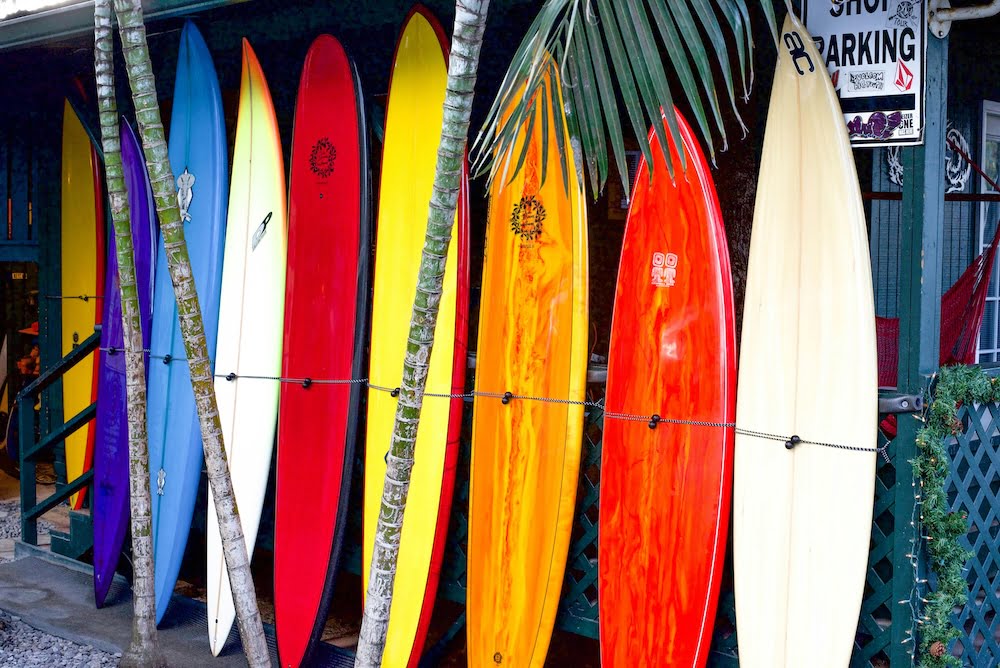
Your ability determines your board type
It might be tempting to go for the hottest, most bladey, knifed-out surfboard you can get your hands on – and by all means, if it’s backed up with your ability, go for it.
But be honest with yourself. If you’re not quite ready for 8+ foot waves suitable for step-ups, don’t bring one. You’re better off opting for a user-friendly performance board.
Skip down for our recommendations on the best board types for Indonesia. Note that most of the boards we recommend below are geared towards confident intermediates.
Volume is your friend (so long as it’s in the right place)
Width, length and thickness measures are all very straightforward, but volume is definitely the most elusive dimension.
We all think that more volume equals an easier board to surf on, but that only makes sense to an extent. In all honesty, more volume in the wrong places will hurt you more than help you.
The key here is finding a balance between enough volume for paddle power and stability, but not sacrificing performance and manoeuvrability.
Volume through the chest and nose is perfect for getting into waves early. Volume in the tail can cause your board to skip out in powerful Indonesian waves.
Surfboard sustainability matters
95% of surfboards are made from either polyurethane (PU) or polystyrene (EPS) foam. Both of these materials are toxic to produce and take hundreds of years to decompose in landfills.
As surfers, it’s important for us to consider the environmental impact of our sport and make more sustainable choices when possible.
Fortunately, there are now many eco-friendly options on the market such as recycled foam and bio-based resins.
Varuna, for example, builds high-performance wooden eco-surfboards in Indonesia. The Space Hawk model in particular is fantastic for the waves here. You can pick one up in Bali either off the rack or as a custom. Just let us know and we can arrange it for you.
As for PU boards made in Bali, we find that they’re of a lighter, less durable construction. This lightness no doubt contributes to better performance, but it also means that they’re more likely to snap or ding.
Our top 10 recommended board models for Indonesian waves
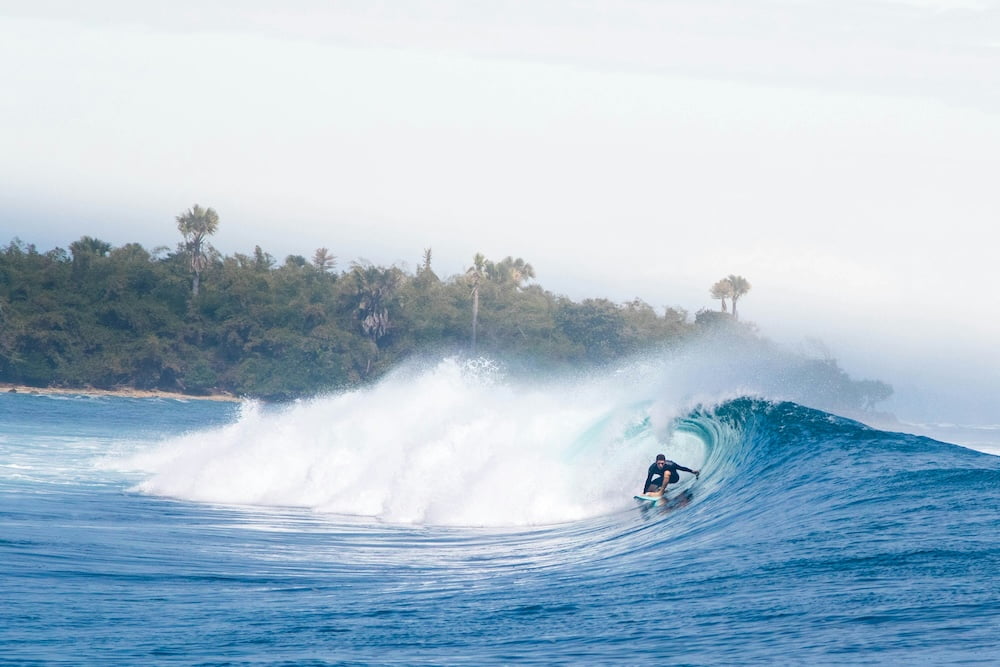
We’ve run countless surf trips throughout Indonesia, which means we’re well-versed in the types of boards that work best for different wave conditions.
Here are our top 10 recommended board models for your Indo quiver.
Note that all of these are from established brands. If you want to buy from a local shaper at home or in Indonesia, you can always use these as a template for what you want.
- Revolution by Jim Banks – ”Speed and glide of a twin with the drive and control of a thruster”. Jim has spent the past few decades surfing and shaping boards in Indonesia. We trust his shapes more than any other to handle the Indo waves. Plus, you can go for the more sustainable and durable options by getting it done with flax fiber cloth imported from Australia, which means it will be less likely to snap, or have pressure dings. You can find Jim Banks surfboards at Karmafree Surf Shop in Uluwatu.
- Gary Mcneill Entity Pin – A versatile all rounder that has proven to do very well in Indo waves, and a sustainable alternative to other brands
- Ghost by Pyzel – A proven performer in steeper, more hollow waves. It can be found at most surf shops in Bali, however be aware that Bali made surfboards are less resistant than those made in Australia, Europe or Hawaii.
- Twin Pin by Channel Islands – A versatile twin fin that glides over slow sections but still holds in more critical parts of the wave
- Water Lion by Pukas – A true performance board. Recommended for upper intermediate surfers who prefer getting barrelled to doing turns.
- Magic Carpet by Jim Banks – All rounder twin fin with lots of speed and control. Suitable for all sorts of waves from perfect indo tubes to onshore mushy waves.
- Volume II by Chilli – A forgiving ride, but with enough hold so you can trust it in more critical sections on the wave
- Monster 6 by JS Industries – Another user-friendly performance board, the Monster 6 is one of the best-selling models on the market. Great for mid-size Indonesian waves
- Dreamweaver by DHD – Owen Wright’s signature surfboard model. With plenty of volume around the chest and a rounded tail, it’s a board that works well at home and in the archipelago
- Space Hawk by Varuna – A high-performance wooden eco-surfboard with great all-around performance
Book an Indo surf coaching retreat today!
Few more suggested things to pack for your surf-trip to Indonesia:
- Solarez for small repairs or duck tape in case of small ding
- 8 foot brand new leashes for bigger days (for safety!)
- Surf aid kit for reef cuts
- Mosquito repellant
- Hats and sunscreens (non harmful to the reef)
- Refillable water bottles (avoid at all costs single use plastic while traveling through Indonesia as there are no waste management nor recycling facilities)
